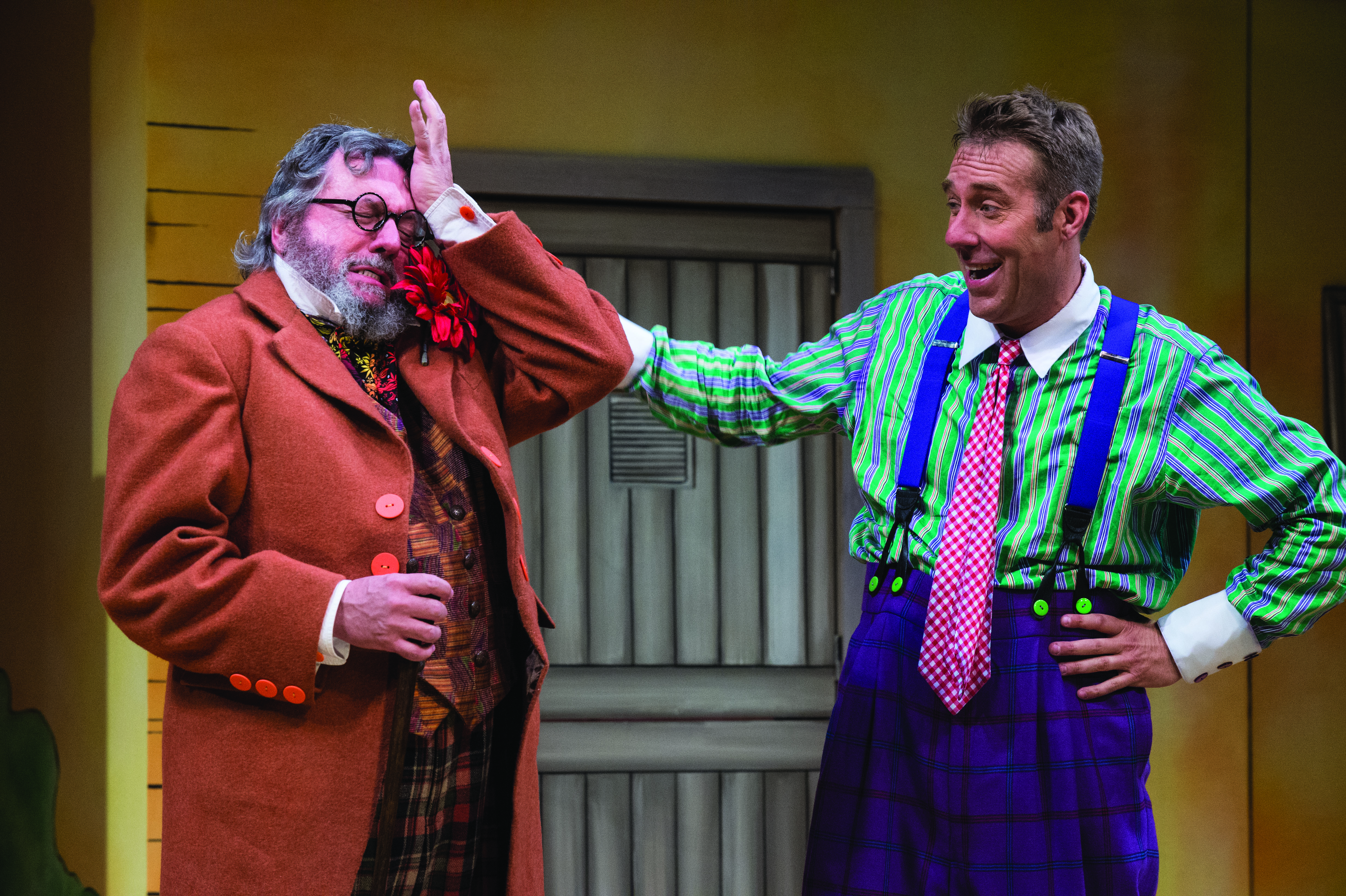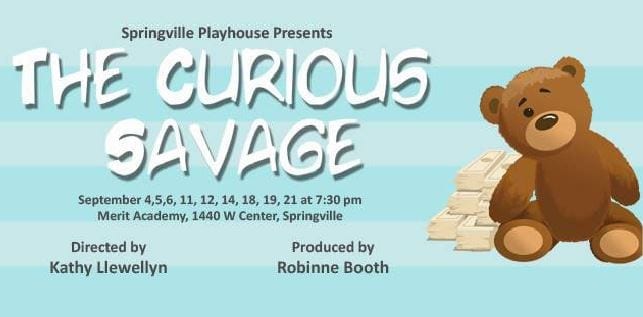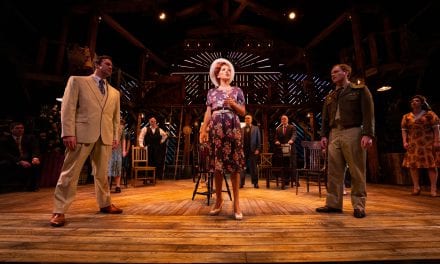CEDAR CITY — The majority of the shows in the 2012 season of the Utah Shakespeare Festival deal with heavy issues: religion, revolution, civil rights, murder, politics, rape, revenge, and more. So when I walked into the Randall L. Jones theater to see Scapin, I was a little shocked at the brightly colored set and had to quickly shift my brain in preparation for a full-out comedic romp.

Matt Holzfeind (left) as Leander, David Ivers as Scapin, and Chris Amos as Octave in the Utah Shakespeare Festival’s 2012 production of Scapin. (Photo by Karl Hugh. Copyright Utah Shakespeare Festival 2012.) Show closes August 31, 2012.
And a romp it was.
The story is thus: two sons of two wealthy men fall in love with two poor women unacceptable to their fathers. Enter servants Scapin and Sylvestre of the houses of Geronte and Argante, respectively, who come to help the sons quickly marry their loves before their fathers can stop them. The play was adapted by Bill Irwin and Mark O’Donnell from one of Molière‘s last comedies, Les Fourberies de Scapin, or Scapin’s Schemings. Despite the updated humor and language, Scapin still holds true to the familiar classical devices: ridiculous slapstick comedy and “unbelievable coincidences.”
The show’s design struck first, bringing to mind a world constructed somewhere between the circus, the cartoon, and the vaudeville stage. Jo Winiarski wins again with her elaborate yet straightforward scenic design. She creates a vibrant cityscape with each household in a color scheme (Geronte in purples and Argonte in oranges), coordinating with each character’s costumes. While, yes, the set was cartoony, it was nonetheless complete and thought-out; at times the set had more depth that the plot.

Matt Zambrano as Sylvestre in the Utah Shakespeare Festival’s 2012 production of Scapin. (Photo by Karl Hugh. Copyright Utah Shakespeare Festival 2012.)
Scapin (pronounced Skuh-PAN) was full of memorable characters. The title character, played by Festival artistic director David Ivers, was a skillful catalyst for most of the show’s action, but it was Matt Zambrano as Slyvestre that stole the show for me. Zambrano’s chameleon-like character held Scapin’s lies together—for the most part—and made the title character’s antics successful. Other stand out performances came from Roderick Peeples, who played a delightfully gullible Argante, and Melisa Pereyra as the charismatic and full-of-laughter Zerbinette. Both actors looked like they were having a blast, and that makes the show that much more fun to watch. I love seeing actors have that much fun onstage!
The show’s many antics were well enhanced by Barry G. Funderburg (sound designer) and Richard Carsey‘s music composition and arrangement. They not only created motifs for certain characters, but also featured a sampling of familiar tunes from pop culture that fit perfectly with the character’s situation in the plot (and had the added bonus of making me laugh). Carsey even had the task of sitting onstage (as “George”) playing the majority of the music on a large calliope adorned with buttons and levers that hid more hilarity and surprise. I loved David Kay Mickelsen‘s costume design, although Geronte’s costume didn’t seem to fit in with the visual style of the play as I would have liked. Nonetheless, the whimsical and cartoon-like atmosphere was thoroughly found in each character’s costume.
Much of the play was tailored to the Utah Shakespeare Festival audience, with hysterical references to the festival itself and its season. Although the show as a whole wasn’t my cup of tea, many moments had me laughing out loud or with a mouth wide open in shock. And I noticed most of the audience enjoying it immensely. I wouldn’t recommend this show to young audiences; much of the humor came from mature jokes. Overall, though, the show is a wonderful, light bit of theater for those who need a break from the festival’s heavier productions.

A scene from the Utah Shakespeare Festival’s 2012 production of Scapin. (Photo by Karl Hugh. Copyright Utah Shakespeare Festival 2012.)





